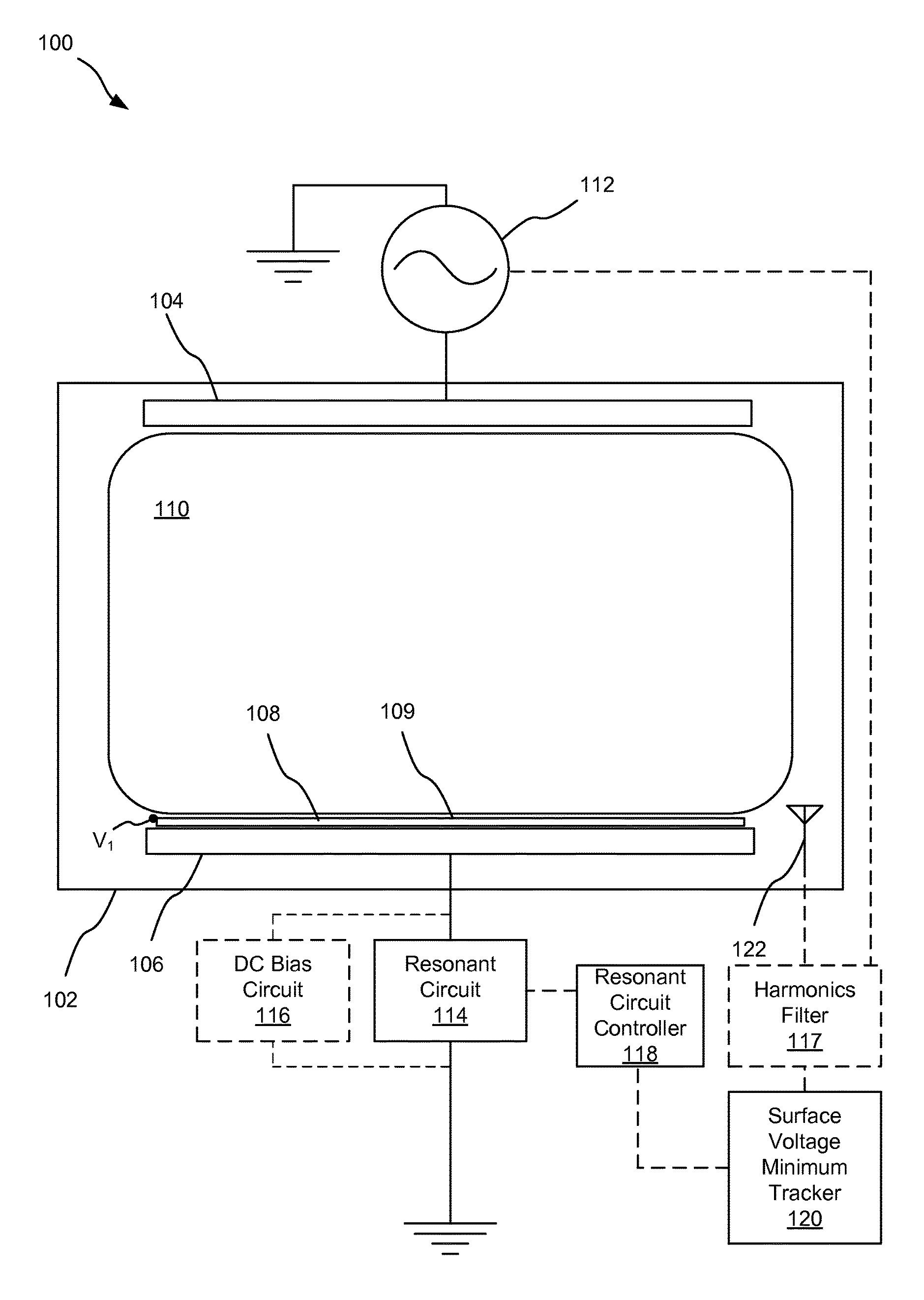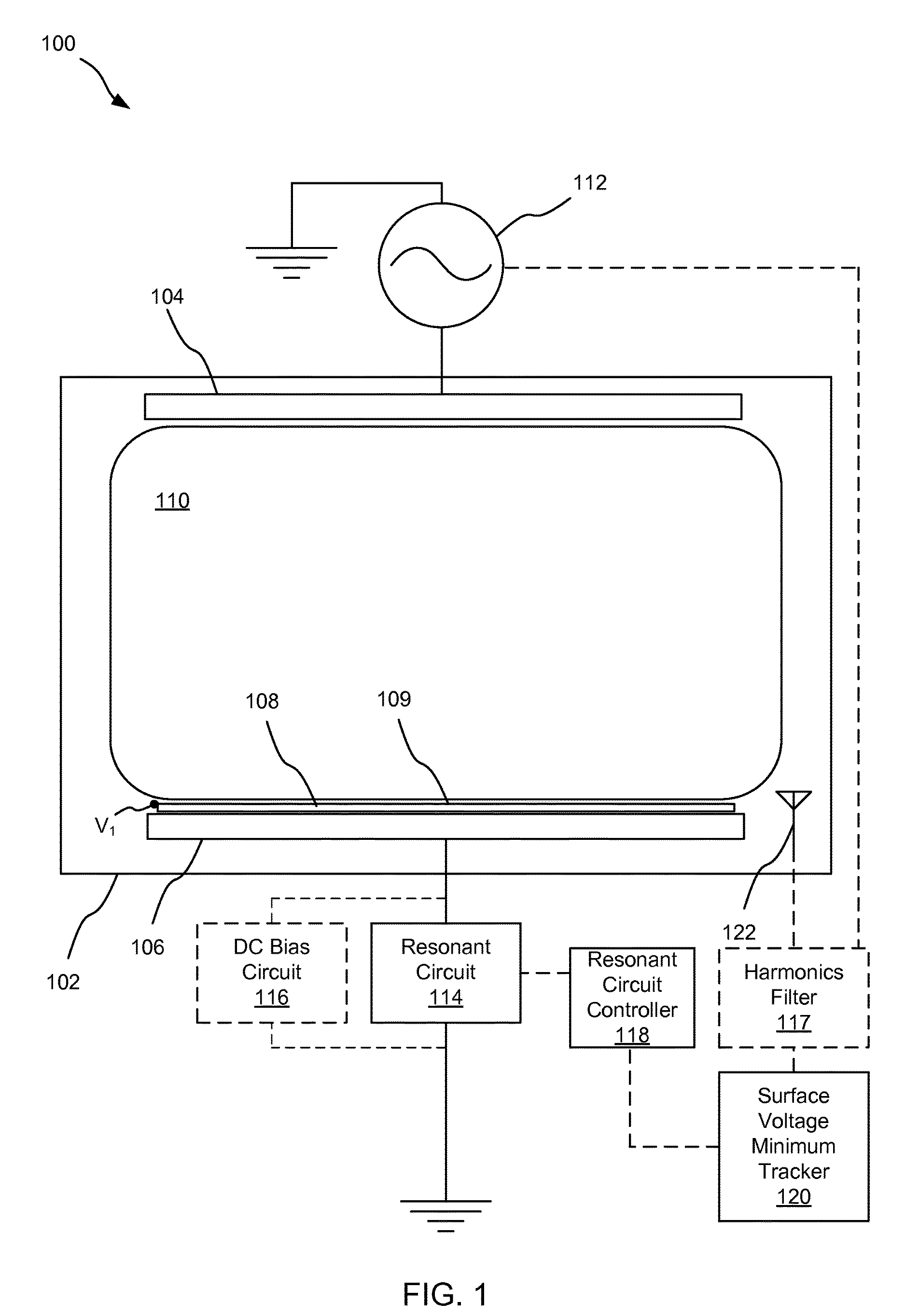Systems, methods, and apparatus for minimizing cross coupled wafer surface potentials
a technology of cross-coupling potential and system, applied in the field of wafer processing, can solve the problems of difficult, if not impossible, direct or contact measurement, etc., and achieve the effect of minimizing rf cross-coupling, minimizing rf power to the substrate, and minimizing the cross-coupling of rf power
- Summary
- Abstract
- Description
- Claims
- Application Information
AI Technical Summary
Benefits of technology
Problems solved by technology
Method used
Image
Examples
Embodiment Construction
[0021]In solving these challenges, the first realization that the inventors made was that, while a typical series LC resonant circuit has a single resonance (e.g., a single null), the series LC resonant circuit used in this context has two resonances, likely caused by stray capacitance and inductance. Modeling then indicated that the resonances were much closer to each other than expected.
[0022]FIG. 2 illustrates a wafer surface voltage plot based on such modeling. The wafer surface voltage 202 is plotted as a function of a capacitance in the series LC resonant circuit (or any other resonant circuit). The wafer surface voltage 202 has a minimum 210 at a given resonant circuit capacitance (or resonant frequency) and a maximum 212 at another resonant circuit capacitance (or resonant frequency). These resonances are so close to each other, that when existing systems were tuned for the minimum wafer surface voltage 210, slight variations in a resonant frequency of the resonant circuit w...
PUM
 Login to View More
Login to View More Abstract
Description
Claims
Application Information
 Login to View More
Login to View More - R&D
- Intellectual Property
- Life Sciences
- Materials
- Tech Scout
- Unparalleled Data Quality
- Higher Quality Content
- 60% Fewer Hallucinations
Browse by: Latest US Patents, China's latest patents, Technical Efficacy Thesaurus, Application Domain, Technology Topic, Popular Technical Reports.
© 2025 PatSnap. All rights reserved.Legal|Privacy policy|Modern Slavery Act Transparency Statement|Sitemap|About US| Contact US: help@patsnap.com



